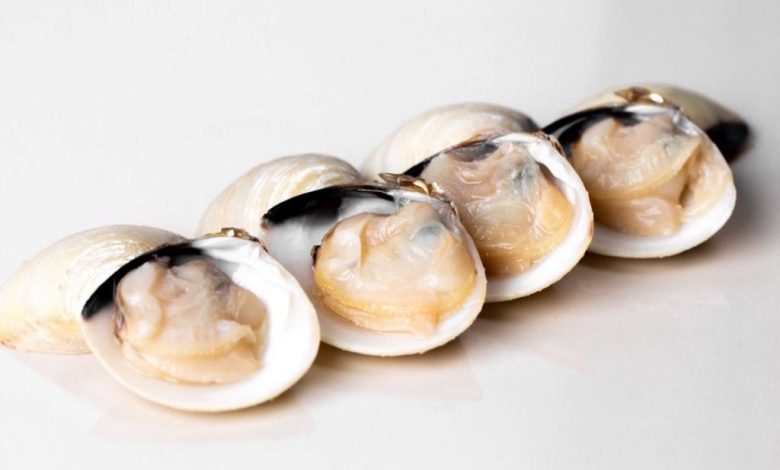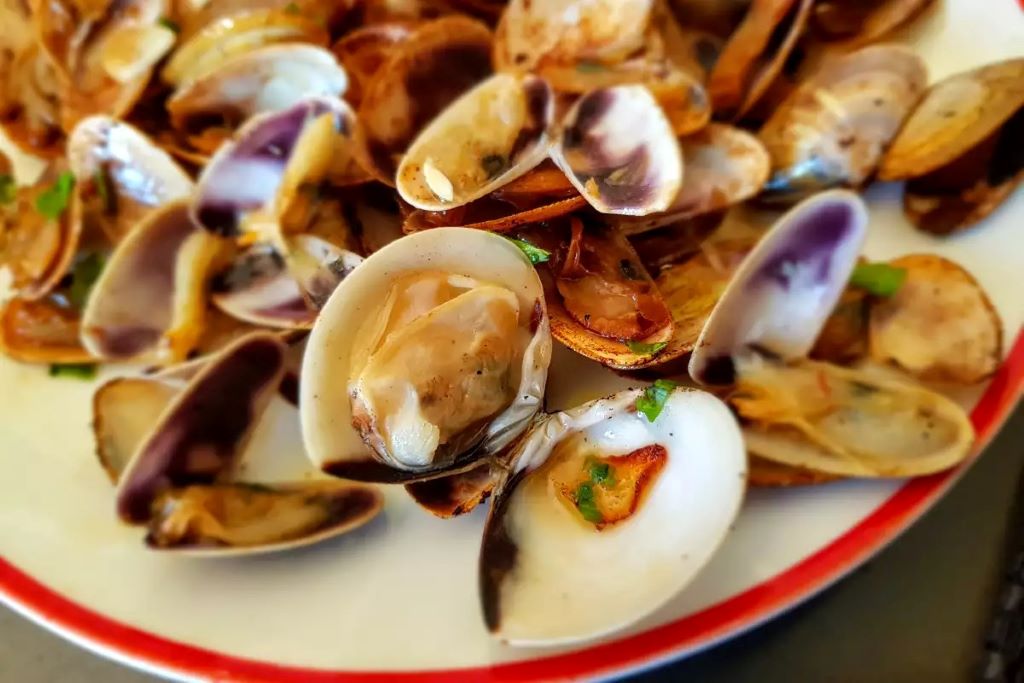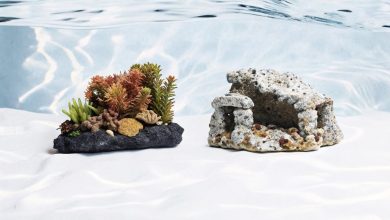Can You Eat Frozen Clams Raw? The Truth About Safety, Taste, and Preparation

Clams are a popular seafood delicacy enjoyed worldwide, whether in hearty chowders, pasta dishes, or simply steamed with butter and herbs. But what if you have frozen clams and want to eat them raw? Can you eat frozen clams raw without any health risks? The answer isn’t as straightforward as it may seem. While raw seafood lovers may be tempted, understanding food safety, preparation methods, and the potential risks is crucial before consuming frozen clams without cooking them.
Before diving into the details, let’s explore Tapa Society, a hub for seafood enthusiasts who appreciate fresh and flavorful shellfish. Whether you’re looking for new recipes or seafood preparation tips, this community offers valuable insights into elevating your seafood experience.
The Safety Concerns of Eating Raw Frozen Clams
Eating raw shellfish always comes with risks, whether fresh or frozen. Clams, like oysters and mussels, are filter feeders, meaning they absorb bacteria, viruses, and toxins from the surrounding water. When consumed raw, these contaminants can pose serious health risks.
1. Bacterial Contamination
One of the biggest concerns with eating raw frozen clams is Vibrio bacteria, a common pathogen found in marine environments. Vibrio vulnificus and Vibrio parahaemolyticus can cause severe foodborne illnesses, leading to symptoms such as vomiting, diarrhea, and, in extreme cases, life-threatening infections. According to the Centers for Disease Control and Prevention (CDC), Vibrio bacteria cause an estimated 80,000 illnesses in the U.S. annually, with raw shellfish being a significant source.
2. Parasites and Viruses
Clams can also harbor parasites like tapeworms and viruses such as norovirus, which is responsible for many food poisoning cases linked to seafood. Freezing does kill some parasites, but it does not eliminate all bacterial or viral threats. The Food and Drug Administration (FDA) advises that shellfish should be cooked to an internal temperature of at least 145°F (63°C) to ensure safety.
3. Storage and Handling Issues
Even if frozen clams were originally safe for raw consumption, improper storage and thawing can lead to bacterial growth. If frozen clams are not handled correctly, they can become a breeding ground for harmful microbes. Clams should always be stored at temperatures below 0°F (-18°C) and thawed in the refrigerator rather than at room temperature to minimize contamination risks.
Do Frozen Clams Retain Their Freshness for Raw Consumption?
The quality of frozen clams depends on how they were processed. Fresh clams that are flash-frozen soon after harvest retain much of their texture and flavor, but the freezing process can still impact their overall quality.
1. Changes in Texture
Raw clams are prized for their briny, slightly chewy texture, but freezing can alter this. Ice crystals form within the clam’s flesh, causing it to break down and become mushy upon thawing. This textural change makes frozen clams less appealing for raw consumption compared to their fresh counterparts.
2. Loss of Natural Brininess
Fresh clams have a distinct salty, oceanic taste, but freezing can diminish this natural brininess. The freezing process may also lead to excess water retention, which can dilute the flavor when thawed.
Are There Any Safe Ways to Eat Frozen Clams Raw?
If you’re determined to eat frozen clams raw, there are a few precautions you should take to reduce risks, though complete safety cannot be guaranteed.
1. Ensure They Are Labeled for Raw Consumption
Some clams are frozen specifically for raw consumption, often labeled as “sushi-grade” or “previously frozen for raw use.” These undergo specific freezing processes to kill parasites and reduce bacterial risks.
2. Use a Proper Thawing Method
Thaw frozen clams in the refrigerator for at least 24 hours before eating them raw. Never thaw at room temperature or under warm water, as this can encourage bacterial growth.
3. Source from Reputable Suppliers
If you plan to eat frozen clams raw, only purchase from trusted seafood markets or suppliers that follow strict quality control and freezing processes.
How to Cook Frozen Clams in Shell for the Best Flavor
Since eating frozen clams raw poses potential health risks, the best way to enjoy them is by cooking them. If you’re unsure how to cook frozen clams in shell, steaming, boiling, or sautéing them are excellent options. Cooking enhances their natural flavors and eliminates harmful bacteria, making them safe and delicious.
For step-by-step cooking instructions, check out https://tapasociety.com/cooking-frozen-clams-in-shell/. This guide provides expert techniques to cook frozen clams properly while preserving their texture and taste.
Alternative Ways to Enjoy Clams Without Eating Them Raw

If you’re craving the fresh, briny taste of clams but want a safer option than raw consumption, consider these alternatives:
1. Lightly Poached Clams
Poaching clams for a short time in a flavorful broth allows them to retain their tenderness while eliminating harmful bacteria.
2. Clam Ceviche
While traditional ceviche uses raw seafood, using pre-cooked clams in citrus juices mimics the texture and flavor of a raw dish while ensuring safety.
3. Smoked or Cured Clams
Cold-smoked or lightly cured clams offer a similar raw-like texture with added depth of flavor while reducing bacterial risks.
Final Verdict
While some seafood lovers may be tempted to eat frozen clams raw, the risks outweigh the rewards. Due to potential bacterial contamination, texture degradation, and loss of natural flavor, it’s generally safer and more enjoyable to cook frozen clams rather than consuming them raw. If you’re looking for a raw seafood experience, opt for fresh, properly handled shellfish that meet food safety guidelines.
FAQs
1. Can you eat frozen clams raw if they are labeled as sushi-grade?
Sushi-grade frozen clams are processed under stricter safety regulations, but there is still a risk of bacteria and viruses. If consuming raw, ensure they are from a reputable source and thaw them properly.
2. Does freezing kill bacteria in clams?
Freezing slows bacterial growth but does not kill all harmful bacteria or viruses. Cooking remains the best way to eliminate foodborne pathogens.
3. How can you tell if frozen clams are still good to eat?
Check for signs of freezer burn, off-putting smells, or excessive ice crystals. If the clams appear discolored or smell bad after thawing, discard them immediately.
4. What’s the best way to thaw frozen clams?
Thaw frozen clams in the refrigerator for 24 hours. Avoid room-temperature thawing, as it increases bacterial growth. If in a hurry, place them in a sealed bag and submerge in cold water.
5. Can I use frozen clams for ceviche?
Frozen clams should be cooked before being used in ceviche. Unlike some fish, raw frozen clams may still contain bacteria or parasites that are not killed by acid alone.
Eating raw seafood always comes with risks, and frozen clams are no exception. If you want the best taste and safest experience, cooking frozen clams is the way to go.
Read More:
Why Get Food Delivered to Your Workplace?



